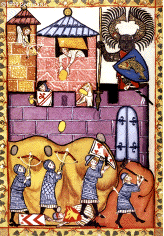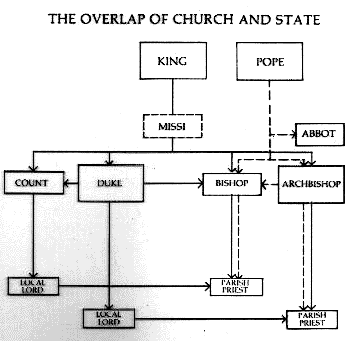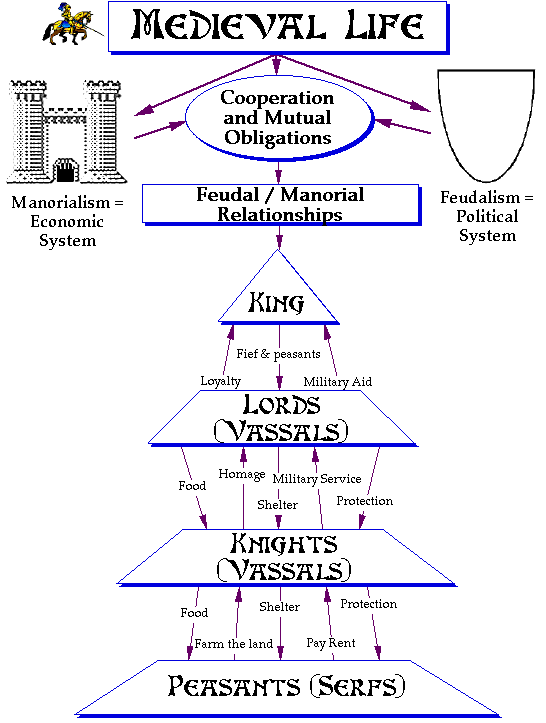The "Feudalism" Model: Its Limits

A number of medieval historians and scholars are increasingly suspicious of speaking of a monolithic economic and political system called feudalism. A large number of differences existed across medieval Europe in the ways in which medieval aristocracy existed in relationship to kings, the ways the lords ruled and maintained power, the place of knights within or outside of the nobility, as well as the relationship of peasants to those above them in the system. The place of towns and merchants, as well as that of the Jews, also complicated this picture.
Nonetheless, the feudal model can be a helpful way to look at economic and political relations if only as a foil to gauge what actually went on in reality.

Church and State
Often vassalage was more complicated than the model suggests--nobles could be everything from minor knights to lords over small manors and territories to major power-brokering barons who ruled small kingdoms. Often, the lords of the largest regions were as powerful or more powerful than the French king or Holy Roman Emperor, and as often kings had to negotiate.
The Church also makes the basic model more complicated since family power sharing often crossed aristocratic and ecclesial lines, nobles having younger siblings appointed as bishops and abbots. In theory, the bishops were answerable to archbishops and on up the line to the popes, but just as often they were more answerably to local lords and kings. In the same fashion, parish priests were just as often answerable to local political powers.
Medieval Feudal System

In a similar fashion, stewards of manors, technically the vassals of lords, could often have more power and wealth than freemen. Manor structures were diverse, too, servile manors had far more vulnerable populations of serfs who were essentially at the whim of their lords, while coloni manors were made up of petty landowners and peasants who had traded their limited property for greater safety and stability. These vassals tended to have more rights remaining to move and keep back aspects of their service. In some regions, serfs also had the right to sell any remaining goods at market and will their limited patrimony to their children.
Likewise, as the new medieval cash economy arose, rents began to be paid in coin rather than goods. This allowed for peasants to keep back a larger share of their profit as the chance occurred. Unfortunately, this also tended to break down the loyalty of lords to their tenants and lead to attempts by some to overcharge peasants, to new taxation policies, to seizures of common fields, and to laws to prevent migration, especially to the new towns. The resulting peasant revolts, even when put down, illustrated the eventual weakening of the system, as well as its potential pressure points.
